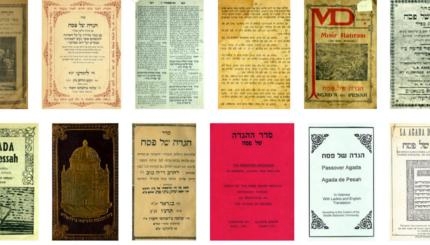Writing under a pseudonym usually protects the identity of the author, but pseudepigraphy is more like identity theft. By attributing one’s works to an earlier, well-known character, the pseudepigrapher not only establishes a narrative setting for the work, but also imbues the text with added authority. In Jewish literary history, most pseudepigraphs provide that authority for works of an apocalyptic or mystical nature. This article was written by Jeffrey Spitzer. Really. I promise.
In a literary culture that asserts that everything of worth was already revealed by God to Moses (Talmud Yerushalmi Peah 2:4), little room is made for originality. That, ultimately, is the reason that Jews who wanted other Jews to pay attention to their highly original work frequently attributed their works to people of great antiquity, establishing the custom of Jewish pseudepigraphy or false attribution.
 Much of Jewish pseudepigraphy either draws on Jewish mysticism or comes from circles that had an emphasis on mystical speculation and experience. This is not really surprising; the kinds of “original works” that would need the added “authority” of an early author were frequently speculative and included claims of divine revelation or extraordinary authority. The term “the Pseudepigrapha” is a scholarly category referring to works roughly from the Second Temple period (sixth century BCE-first century CE), most of which are falsely attributed to biblical characters, and most of which include prophetic or mystical revelations.
Much of Jewish pseudepigraphy either draws on Jewish mysticism or comes from circles that had an emphasis on mystical speculation and experience. This is not really surprising; the kinds of “original works” that would need the added “authority” of an early author were frequently speculative and included claims of divine revelation or extraordinary authority. The term “the Pseudepigrapha” is a scholarly category referring to works roughly from the Second Temple period (sixth century BCE-first century CE), most of which are falsely attributed to biblical characters, and most of which include prophetic or mystical revelations.
The last half of the biblical book of Daniel was already identified in the third century CE as being a pseudepigraph. This part of the book retells what are purported to be revelations of future events during the second century BCE with uncanny accuracy, until the events of winter 164, during the reign of Antiochus Epiphanes IV. In the words of the pagan philosopher Porphyry, who identified Daniel as pseudepigraphic (as quoted by the Church Father Jerome), “[Daniel] was composed by someone who lived in Judea in the reign of Antiochus Epiphanes, and he did not foretell the future but retold the past. Therefore, what he says down to Antiochus is accurate history; but if he added any guesses about the future, he just invented them, for he did not know the future.”

Help us keep Jewish knowledge accessible to millions of people around the world.
Your donation to My Jewish Learning fuels endless journeys of Jewish discovery. With your help, My Jewish Learning can continue to provide nonstop opportunities for learning, connection and growth.
Other pseudepigraphs from the Second Temple period include the book of Jubilees, which presents itself as a dialogue between the Angel of God’s Presence and Moses and includes retellings of biblical narratives as well as rather strict “clarifications” of biblical law. The Testaments of the Twelve Patriarchs and other Testaments take the literary form of deathbed stories, but frequently include legendary material as well as mystical content. Many of the pseudepigraphic works of this period, however, are attributed to less prominent Biblical characters. Enoch, whose report of death is quite unusual (“[Enoch] walked with God; then he was no more,” Genesis 5:23) became a natural target for mystical books dealing with ascents to heaven. Barukh, the scribe who worked for the prophet Jeremiah, must have written something of his own. A pseudepigrapher filled out Barukh’s resumé by penning, under his name, an apocalyptic vision set during the fall of the First Temple.
Late in the Byzantine period, Sefer Zerubavel, attributed to the last Jewish ruler descended from King David who lived in the sixth century BCE, describes a revelation to Zerubavel about the victory of the Messiah and the Messiah’s mother over the wicked Armilus, who represents the Christian Emperor of Byzantium. Written during the period of Islamic rule in the land of Israel, the midrashic work Pirkei de-Rabbi Eliezer, attributed to the tanna (early rabbinic sage) R. Eliezer ben Hyrkanus (first century CE), retells Biblical history, but incorporates lots of material from the Pseudepigrapha of the Second Temple period, and especially materials from the books attributed to Enoch. The inclusion of descriptions of the Muslim Omayyad caliphate indicate a date during the beginning of the eighth century CE.
In the 13th century, Moses ben Shem Tov de Leon, a disciple of the kabbalist Joseph Gikatilla (a Jewish mystic), composed a variety of pseudepigraphs. One, the Testament of R. Eliezer the Great, also attributed to the tanna Eliezer ben Hyrkanus, reuses the earlier model of the revelation of wisdom on the deathbed. De Leon’s most significant works, however, were attributed to the tanna Rabbi Shimon bar Yochai and became known as the Midrash haNe’elam (the lost Midrash). This work formed the basis of the multi-volume mystical magnum opus known as the Zohar.
Nathan of Gaza, the supporter of the messianic pretender Shabbetai Zevi, also produced a pseudepigraph attributed to an earlier, medieval pietist, Avraham Hasid, who “predicted” the birth and life of Shabbetai Zevi. The work allegedly convinced the not-too-reluctant Shabbatai Zevi that he was, in fact, the messiah. The Polish kabbalist and pseudepigrapher Samson ben Pesach Ostropoler wrote a commentary to an otherwise unknown and thoroughly obscure work called Karnayim, authored by an unidentified Aaron from the town of Kardina (also unidentified). The book is so difficult and Ostropoler’s commentary so clever, that it is clear that he wrote both the pseudepigraphic book as well as the commentary.
Within Hassidic circles, stories have been attributed to this or that rebbe. The popular Tzavva’at haRivash, which purports to be the ethical will of the Baal Shem Tov, (the founder of Hassidism) actually is composed almost entirely of the sayings of Dov Baer of Mezrich. This work goes back to the early, testament model of pseudepigraph.
During modern times, the thirst for the byline or the need to pad one’s resumé with publications might make this Jewish penchant for pseudepigraphy incomprehensible. Yet, with the advent of the information explosion, creative writers need any advantage they can gain to get their ideas read. To note one widely-observed example, several years ago, someone wrote a great address to graduating MIT students (“to the class of ’97: wear sunscreen”). No one read it, however, until it was spread across the internet as the speech of writer Kurt Vonnegut.
Avraham
Pronounced: AHVR-rah-ham, Origin: Hebrew, Abraham in the Torah, considered the first Jew.

Help us keep Jewish knowledge accessible to millions of people around the world.
Your donation to My Jewish Learning fuels endless journeys of Jewish discovery. With your help, My Jewish Learning can continue to provide nonstop opportunities for learning, connection and growth.
Midrash
Pronounced: MIDD-rash, Origin: Hebrew, the process of interpretation by which the rabbis filled in “gaps” found in the Torah.

Help us keep Jewish knowledge accessible to millions of people around the world.
Your donation to My Jewish Learning fuels endless journeys of Jewish discovery. With your help, My Jewish Learning can continue to provide nonstop opportunities for learning, connection and growth.
Pesach
Pronounced: PAY-sakh, also PEH-sakh. Origin: Hebrew, the holiday of Passover.

Help us keep Jewish knowledge accessible to millions of people around the world.
Your donation to My Jewish Learning fuels endless journeys of Jewish discovery. With your help, My Jewish Learning can continue to provide nonstop opportunities for learning, connection and growth.


